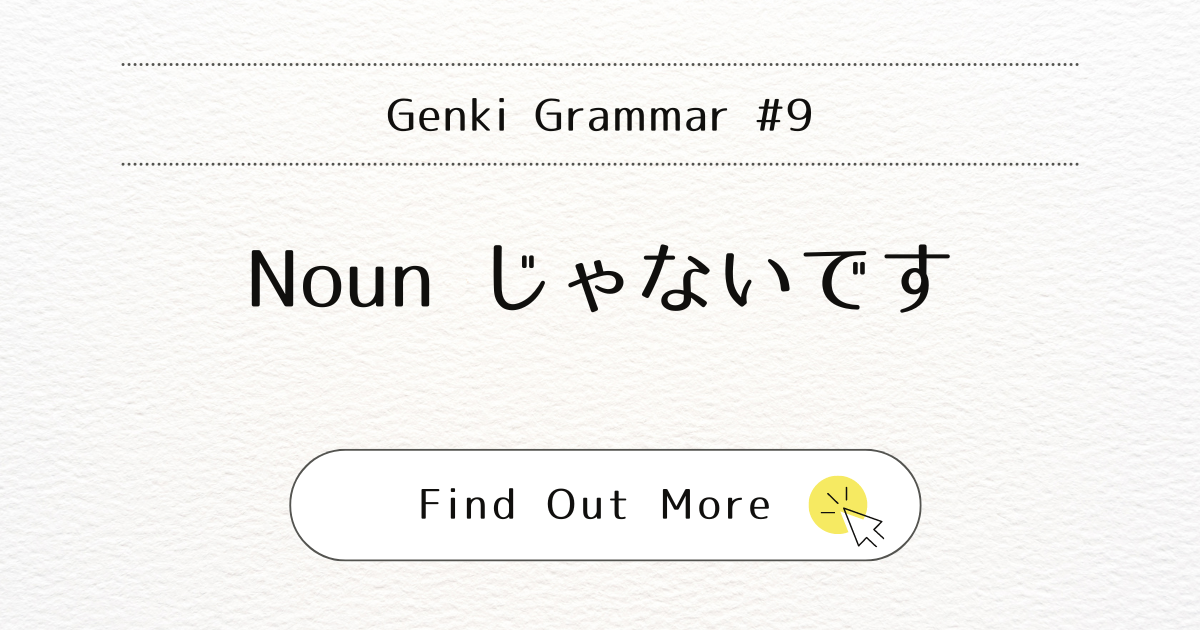
Introduction
In this post, we’ll learn how to negate a sentence in Japanese. Specifically, we’ll focus on how to change a statement like “XはYです” (X wa Y desu) into a negative form using “じゃないです” (ja nai desu). This is essential for expressing that something is not the case.
What It Means
The phrase “じゃないです” (ja nai desu) means “is not” in English. It’s used to negate a noun statement. For example, if you want to say “Suzuki is not a student,” you would say, “すずきさんはがくせいじゃないです” (Suzuki-san wa gakusei ja nai desu).
When You Use It
Use “じゃないです” (ja nai desu) to turn a positive statement into a negative one. This is commonly used in casual conversations. For more formal situations, there are other variants you can use, which we’ll cover as well.
Examples
Here are some examples to help you understand how to use “じゃないです” (ja nai desu):
- Positive Statement:
すずきさんは がくせいです。
(Suzuki-san wa gakusei desu.)
Suzuki is a student.
Negative Statement:
すずきさんは がくせいじゃないです。
(Suzuki-san wa gakusei ja nai desu.)
Suzuki is not a student.
- Positive Statement:
これは ほんです。
(Kore wa hon desu.)
This is a book.
Negative Statement:
これは ほんじゃないです。
(Kore wa hon ja nai desu.)
This is not a book.
- Dialogue
A: にほんじんですか。(Nihon jin desu ka.) Are you Japanese?
B: いいえ、にほんじんじゃないです。(Iie, nihonjin ja nai desu). No, I am not Japanese.
Note
It’s important to know that “じゃないです” (ja nai desu) is colloquial. For more formal speech or writing, you can use “じゃありません” (ja arimasen) or “ではありません” (de wa arimasen).
- すずきさんは がくせいじゃありません。
(Suzuki-san wa gakusei ja arimasen.)
This is a more conservative speech style. - すずきさんは がくせいではありません。
(Suzuki-san wa gakusei dewa arimasen.)
This is formal and appropriate for writing.
Conclusion
Mastering the use of “じゃないです” (ja nai desu) will help you effectively express negation in Japanese. Remember that there are more formal variations like “じゃありません” (ja arimasen) and “ではありません” (de wa arimasen) for different contexts.



